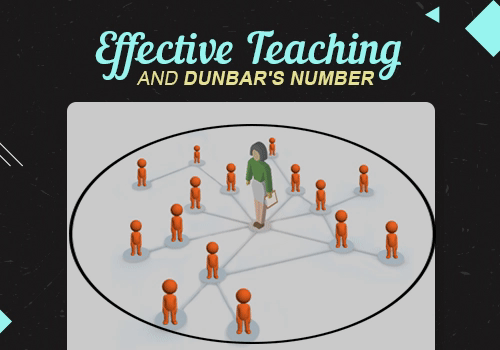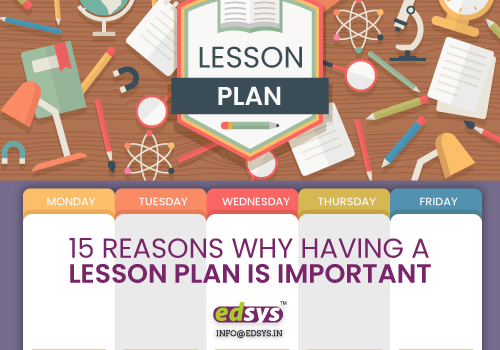Biology has placed certain constraints on human brains as to how large can our social circle be.
This was a research carried out by Robin Dunbar, in a mind boggling revelation about human brain and their social circle.
Dunbar’s Number – states that a person can maintain only 150 stable relationships with other humans during a certain phase of life.
The concept applies to every sphere of human life, be it professional or personal. We are a social species and everything we do boils down to where we want to be in this society. The ultimate goal is to stabilize the coefficient of social relationships.
And where and how does this process initiate? Dunbar’s theory inspires us to question the very basis of today’s institutional architecture. The place where the process of social interaction begins for a human, seconds the value of it to academics.
The Basis of Dunbar’s Number Theory
The members of primate group manifest a relationship between the size of their brain and the size of their social circle.
There is a pattern when it comes to the primate group. It follows a grouping of 150 people with whom we feel a sense of trust and obligation. Technically these are more than just names and faces to us.
There are species of animals that are not as intensively social as the humans. The research brings out a relation between the size of the brain and their affinity towards intensive, steady relationships. It turns out as we all know; human relationships are very demanding for a reason.
The research was co-related to hunter gatherer communities where the communities were grouped into a number of 150.
Explains why one person cannot govern a country all by himself. There is a pronounced need of advisories and sub governing bodies to simplify the process.
The Fate of Teachers in Current Educational Scenario
Now think about how it can address the issues in today’s educational system.
If we consider a teacher has seven classes in one day, each with a capacity of 40 students.
She encounters over 200 students in a day.
Considering the Dunbar’s theory, it is practically impossible for the teacher to know the cursory details of each student. Even in the rarest of the cases, if the teacher manages to remember all these details, it is unquestionably out of her capacity to connect with these many students on a personal level.
There can be an outlook where in the need for this inherent connection might forever be locked in a dispute. Except, certain prerequisites of healthy education can never be over looked for obvious reasons.
Teacher’s Attention means a lot to Students
It is unfortunate that present educational structure prioritizes academic growth over a wholesome physical, emotional and spiritual development.
For starters, establishing a stable connection at individual level is essential to comprehend the demands that account for an exponential graph of academic performance.
A teacher has to work out the math of the overall grasping potential that comes from interacting with each student closely. This helps her tailor her lessons and curricular planning to fit the frequency of each child in the class. A slight variation or peak in momentum of lesson advancement could leave a void and cause the student to lag for the rest of the classes.
Classroom activities can be planned keeping in mind the strengths and weaknesses of each student giving a sense of responsibility to all.
A lot of us might argue on the idea of tweaking curriculum to fit the needs of individual comfort. However if we are failing to consider the principle of diversity whilst deciding the procedures to evaluate a set of pupils, it could turn out to be a big bias in the favor of few.
Now Looking at it from a Student Perspective!
Developing a relationship with an authoritative figure other than the parent is the next step in the life of a child’s development. It helps them determine their personality and stem the process of social evolution.
In other words, the student-teacher relationships mark the first step in the social progression of the child.
Studies have gone to prove that emotional intelligence of children has seen a huge rise when nurtured in a structured and organized environments.
Given the scenario in today’s educational institutes, where overcrowding lurks as a result of hyped reputation of a few institutes and lack of infrastructure in a few others, it is not uncommon for a student to struggle to meet his needs for attention.
And at what cost? The very purpose of this system is undermined as the scores hit by students in these niches lie in two extremes. Teachers are unable to evenly support students in terms of curriculum resulting in non-standardized test scores across the classroom.
This fosters a feeling of insignificance and negativity towards self that could lead to chronic cases of self doubt and low self esteem in young minds.
It goes without saying that the current system is unfair to both teachers and students.
How Can We Address These Issues?
For starters let us focus on efforts of reducing the size of each class, so that each student gets the attention they need and deserve.
If we can place students who struggle with a similar weakness together and keep the size of the classrooms smaller it would definitely work in their favor. Ability grouping is not such a bad thing after all if done wise and careful.
Teachers can focus on creating more engaging activities and lessons that will potentially captivate most students in the class.
And more importantly the teacher needs to be prepared to face the fluctuating dynamics of varied class sizes and students. Respectfully, as demanding as this job is, the teacher needs to adapt to the drifting nature of the classrooms and students.
A glimpse at the educational health of countries like Finland will help comprehend the gravity of the situation.
The Finnish educational model enjoys consistent success when compared with the global scenario owing to a high quality pedagogical training and a regulated staff-child ratio. It comes as no surprise as the education is structured for a holistic socioeconomic development of the state which encompasses the social, cultural, political, economic, and ethical-moral factors.
The average student teacher ratio noted in the Nordic country is 16.03 students per teacher. With this unorthodox educational model in place, one teacher is allotted to 15-20 students for the entire span of their elementary education. So by the end of the first year, the teacher has already figured out the instructional needs of every individual.
Most other countries following a corporate oriented model will term this extremely ideal and difficult to achieve given the rising student population.
But doing this, aren’t we underestimating the ultimate potential of digital transformation to enhance human connections?
How do we exploit the Power of Tech?
Provide teachers with tools to help them tweak their lesson plans and daily schedule. These implements could help a teacher set up her activities as per the needs and the size of her class.
Speaking of tools, time scheduling and management apps have been doing the rounds lately and have proven to be quiet useful in rightfully dispensing class hours. Timetable app from edsys for instance has an automated function for timetable creation and mapping information to match each class with a suitable teacher.
Schools can employ this app to ensure a rightful distribution of students and allotment of teachers thus clearing the mess of prejudice that prevails in the current scenario. This will help ensure that each teacher will not tend to more than 150 students for one academic year.
Conclusion
The above discussed points could just be a pebble in the sea of problems we are yet to discover, rising as a result of unhealthy student teacher connection.
It is a hard truth that the concept of Dunbar’s number is nowhere in the consensus of today’s institutional architects.
But at the same time, we cannot ignore how much it calls for a revaluation and enhancement in the present educational set up.





